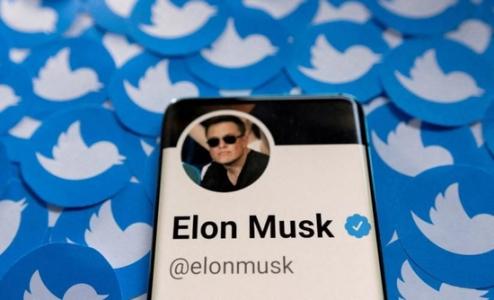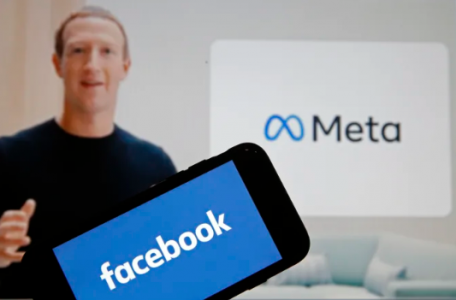your current location is:Home > Finance > depthHomedepth
Tiffany also came to "grab money": NFT limited necklace of 340,000 pieces was robbed in 20 minutes
50 years ago, in the movie "Breakfast at Tiffany's", Audrey Hepburn stood in the big Tiffany glass window and stared at the classic scene, which made Tiffany&CO. this jewelry brand become the dream of countless girls all over the world.
Since Alexandre Arnault, the second son of LV Group and post-90s, became Tiffany's vice president of product and communication last year, Tiffany began to move continuously in the trend circle, constantly expanding its younger fashion second curve.
Recently, Tiffany has also started the hottest NFT nowadays. This time, Tiffany started a successful hunger marketing from the top CryptoPunks in the circle, and turned NFT into real jewelry. It also made Tiffany attract countless attention in the jewelry industry, fashion industry, and Web3 circles, and once again made NFT. The CC0 copyright model came to the forefront.
Many people have ridiculed that it seems that in the future, not only girls are looking forward to Tiffany's little blue box, but boys will also break their heads for it.
More and more trendy Tiffany, 340,000 NFT necklaces were robbed
At the beginning of last week, Tiffany officially announced its official entry into the NFT field, and launched the brand's first project "NFTiff", which is a combination of "NFT" and "Tiffany". The theme of this NFTiff series is CryptoPunks, which is limited to 250 sets, and each set is priced at 30 Ethereum (about 340,000 RMB).
The biggest feature of this NFTiff is the "combination of virtual and real". Users who have purchased the "NFTiff Pass" can not only get a unique Tiffany customized version of the physical pendant, but also get the pendant's NFT digital collection.
In the official NFTiff project promotional video, Tiffany changed the delicate and elegant route of the past, the small blue box has become a pixel style, the music has become an electronic version, and the pendant example of CryptoPunks is used to give people a sudden transformation. It has become a trendy feeling.
Video from Tiffany official
But it should be noted that this NFTiff is not something you can buy with money. In addition to the limited sale, the sale of this NFTiff is limited to holders of CryptoPunks, and each user is limited to three "NFTiff passes".
As the earliest and hottest series of digital collections in the NFT market, millions of dollar-level avatars abound in the CryptoPunks series, and even the highest selling price exceeds $20 million. Therefore, this wave of Tiffany's operations can be said to completely focus the target customers on high-net-worth individuals.
In order to restore the original appearance of the CryptoPunks avatars with high quality, the Tiffany design team converted the 87 attributes and 159 colors that appeared in the 10,000 avatars of the CryptoPunks series into gems and enamels with the most similar colors, and then put them in 18K rose gold or 18K Painted and inlaid on a gold chassis.
Each solid necklace measures about 3 cm long and 2-3 cm wide, complete with a minimum of 30 gemstones or diamonds, and comes with an adjustable necklace. The back of the pendant is also engraved with the number of the CrytoPunk head and the TIFFANY & Co. logo.
The actual necklace of the founder of the blockchain company Chain, the picture comes from Deepak.eth Twitter
Tiffany opened the pre-sale of 100 NFTiff passes on the morning of August 3rd, Eastern Time, and they were quickly sold out. The remaining 150 NFTiffs were officially released on the 5th, and they were sold out in about 20 minutes. . There are also some familiar figures among the buyers, such as JJ Lin, Moonbird founder Kevin Rose and so on.
Statistics show that this time Tiffany successfully raised more than 12.5 million US dollars with only these 250 passes. Tiffany said that the delivery of the first NFT collections is expected to be in December this year, while the delivery time of the matching custom necklace is expected to be February 2023.
However, Silicon Stars noticed that the current floor price of NFTiff in the secondary market has fallen below the issue price of 30 Ethereum.
The post-90s "Gao Fushuai" president is at the helm, and Tiffany deploys Web3 consumer ecology
In fact, since NFT became popular last year, many luxury brands including Gucci, Burberry, Balenciaga, etc. have tried the water to engage in NFT, and Tiffany is not the first.
However, the biggest feature of this project is that Tiffany did not rely on Opensea or other trading platforms to issue or sell its own NFTiff, but joined hands with Chain, a blockchain technology innovation company, to create its own global NFT platform nft.tiffany. com.
It can also be seen from this that Tiffany's entry into NFT is not just as simple as playing a ticket, but has a longer-term plan. Next, Tiffany may cooperate with more NFT series works, copy and upgrade the gameplay of this CryptoPunks, and create a brand new through NFT development, mutual conversion between digital and physical versions, trading and resale. NFT business ecology.
Tiffany's high-profile transformation attempt to enter Web3 can be said to be closely related to its current vice president of product and marketing, Alexandre Arnault.
In October 2020, LV Group acquired Tiffany for $15.8 billion, the largest transaction in the history of the luxury goods industry. And Alexandre Arnault is the second son of Bernard Arnault, the head of the LV Group. Alexandre, who was born in 1992 and is 1.9 meters tall, is regarded by the industry as one of the most potential successors of the LV Group. He is known for his youthful style of behavior. He has made great contributions to the digital transformation of the LV Group and the expansion of young customers in recent years. great contribution.
For example, at the age of 25, he became the CEO of Rimowa, a century-old luggage brand. He innovated the brand marketing strategy and promoted the cooperation between Rimowa and young brands Supreme, Off-White, etc. In addition, he also took the lead in creating LV's e-commerce platform 24 Sevres.
Image from Alexandre Arnault's personal Instagram
After taking over Tiffany, Alexandre is also "rejuvenating revolution" constantly. As a self-proclaimed "tech nerd", Alexandre is also very interested in the current hot Web3.
In January of this year, Alexandre changed his Twitter and Instagram avatars to CryptoPunks, and then posted Tiffany accessories based on his CryptoPunks on Twitter in April. At that time, the outside world speculated that Tiffany would be in There is some action on NFT. But at the same time, his father, Bernard Arnault, the head of LV, has also publicly stated that he has no interest in selling the brand's virtual products at low prices.
And this time, Alexandre clearly found a good way to combine digital and physical products. Not only did it not weaken the tone of Tiffany as a luxury product, but also found a good path for the conversion of NFT and physical goods in the future.
Image from Alexandre's April tweet
The NFT copyright issue has become the focus again. How does the CC0 model work?
Tiffany's way of materializing NFT this time can be said to have opened the door to a new world for various brands. Since popular NFTs can be turned into jewelry, can they also be turned into luxury bags, clothes and accessories? Therefore, how to define the copyright of NFT, how to ensure the scarcity of NFT, and the attribution of income have become issues of great concern to everyone.
In fact, although Tiffany's NFT project is based on CryptoPunks, it has no direct relationship with the project side of CryptoPunks. In CryptoPunks' official statement, Tiffany's attempt has made a good case for their upcoming copyright license agreement.
In March of this year, YugaLabs, the parent company of The Boring Ape, announced that it had acquired all of CryptoPunks’ intellectual property and announced plans to grant commercial rights to all CryptoPunk holders. That is, when you own an NFT, you not only own its ownership, but also its copyright, and you can decide what to do with your CryptoPunk and what kind of IP to build around it.
In Tiffany's case this time, in essence, it's not that Tiffany sold products to customers this time, but the holders of CryptoPunks avatars entrust Tiffany to create new IP based on the NFT they hold, and this new The IP is Tiffany's CryptoPunks pendant and a new NFT.
Behind this is actually a recent focus of discussion in the NFT industry, a form of copyright called CC0.
CC0 is a copyright digital licensing license launched by the non-profit organization Creative Commons (Creative Commons, CC) in 2009 to give up copyright and put works into the public domain. If an NFT project declares the CC0 license, it means that anyone can use the NFT for commercial or non-commercial purposes in various ways, without specifying the creator of the original NFT and without any application.
Simply put, CC0 can be seen as an open source IP. That is to say, even if you don't hold an NFT, you can make secondary creations based on that NFT work and profit from it. At present, many emerging NFT projects have turned to the CCO model, such as Mfers, Moonbirds, Blitmap, Nouns, etc.
Of course, the industry is still full of controversy over whether NFT projects should adopt the CC0 protocol.
Supporters believe that CC0 can quickly expand the popularity of the project and expand the boundaries and scale of the entire NFT market. When people are using NFT to create more creative products, the NFT market will prosper rapidly. At the same time, this practice of not holding the copyright in the hands of the project party is obviously more in line with the spirit of Web3 decentralization.
Opponents believe that the CC0 agreement will lead to the abuse of NFT works, thereby weakening the influence and scarcity of the original NFT project. At the same time, it is easy to cause disputes over copyright and creativity, and damage the rights and interests of NFT holders.
Under such circumstances , leading projects including Boring Ape, Meebits, CloneX, Azuki, etc. have adopted a more compromised approach, which is to grant restrictive licenses. For example, Boring Ape allows holders to use their own NFTs to create and sell derivative products, but requires that BAYC's brand LOGO and name cannot be used; Meebits requires holders to obtain business interests of no more than 100,000 US dollars per year, etc.
Li Ning once used the boring ape avatar he held for commercialization. The picture comes from Li Ning's official Weibo
In this model, the copyright of the NFT work is still owned by the project party, but the project party grants the power to the holder for free under certain binding conditions. Because it is not open to everyone, it can also ensure the scarcity of the project.
Before being acquired by Yuga, CryptoPunks actually used a completely closed copyright form, and holders did not have any other rights except to use the purchased works as avatars and trade. This is also an important reason why CryptoPunks is the earliest NFT, but its later development is not as good as that of rising stars such as Boring Ape. And Tiffany's test of the water is obviously to open a new business channel for CryptoPunks.
At present, under the general environment of NFT ebb, it may be the general trend for projects to turn to restrictive licenses or complete CC0. With the increasingly clear copyright issues of NFTs, we may also see more physical goods with NFT elements appear in our daily lives.
*Note: The background of the cover image is from Tiffany official, and the copyright belongs to the original author. If you do not agree to use it, please contact us as soon as possible.
related articles
Article Comments (0)
- This article has not received comments yet, hurry up and grab the first frame~












